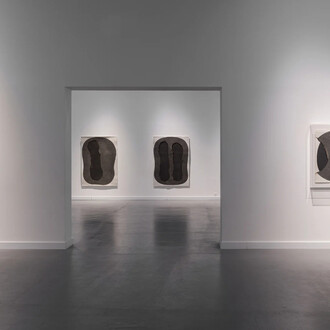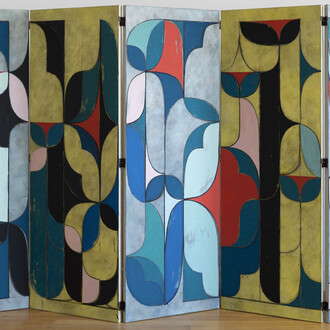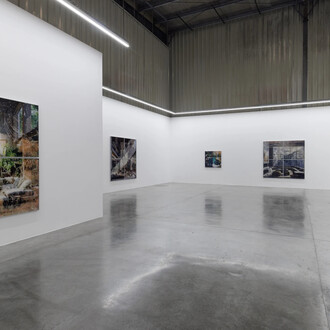Ayyam Gallery Dubai (DIFC) is pleased to present Shapeshifters and Transformations, a collective exhibition that brings together five leading artists from the Arab world. Highlighting works by Samia Halaby, Faisal Samra, Safwan Dahoul, Tammam Azzam, and Athier Mousawi, Shapeshifters and Transformations details the ways that artists are currently addressing exigent subject matter, including large-scale violence, the adverse effects of technology in the modern age, and changing landscapes.
Approaching the concept of transformation from divergent perspectives, the featured artists use their respective media to describe moments when the body is altered, environments collapse, or regeneration unfolds. In Athier Mousawi’s vibrant paintings, for example, a soldier’s ‘mechanical’ heart is laid bare as a representation of war, as abstracted forms, bits and pieces of a machine, and severed limbs are entangled in an explosion. Faisal Samra also portrays shapeshifting phenomena in Distorted Reality, a series of performances that are documented as video stills and photographs. Samra is shown draped in textiles and cloth while struggling to break free. The violence of his gestures is blurred when digitally captured, resembling a state of transfiguration. This series describes the insidious nature of technology and the burden of representation that has emerged with the proliferation of visual media. As we are bombarded by images, Samra argues, our identities absorb the assault.
Violence is also brought to mind with the works of Safwan Dahoul and Tammam Azzam, although it is alluded to rather than explicitly depicted. Dahoul’s recurring figure appears against a white backdrop in the latest installment of his ongoing Dream series. Lost and fragmented, she embodies the experiences of Syrian migrants and evokes the loss of shelter and homeland that millions have endured. Similarly, Azzam’s paintings of destroyed Syrian homes and neighborhoods reference the ruin that has resulted from the catastrophic war with expressionist compositions that not only describe the fall of cities but also the overall breakdown of a society.
Samia Halaby offers a more optimistic outlook with colourist compositions that describe the growth patterns and rhythms of nature. Relying on the viewer to identify each scene according to their own memories and perceptual experiences, Halaby encourages her audience to think of the many ways that things evolve, emphasising that growth is the most essential part of life, and how beauty can be found in often overlooked places.













